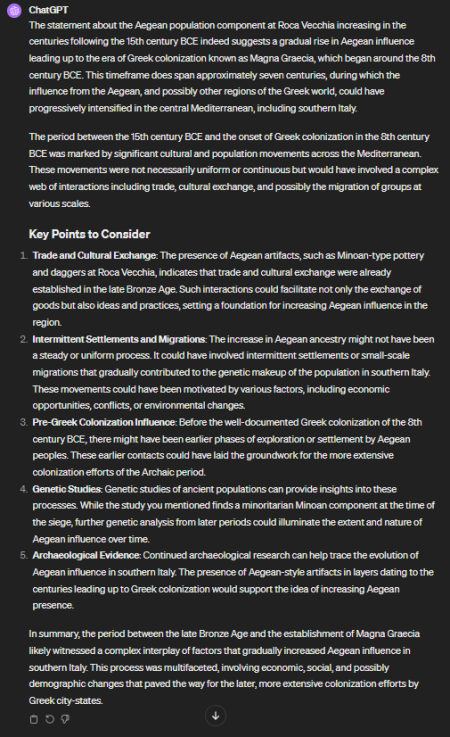Jovialis
Advisor
- Messages
- 9,313
- Reaction score
- 5,876
- Points
- 113
- Ethnic group
- Italian
- Y-DNA haplogroup
- R-PF7566 (R-Y227216)
- mtDNA haplogroup
- H6a1b7
Interesting! So there was indeed some direct Minoan contribution. With increasing Aegean in the following centuries. Probably increasing with Magna Graecia.





